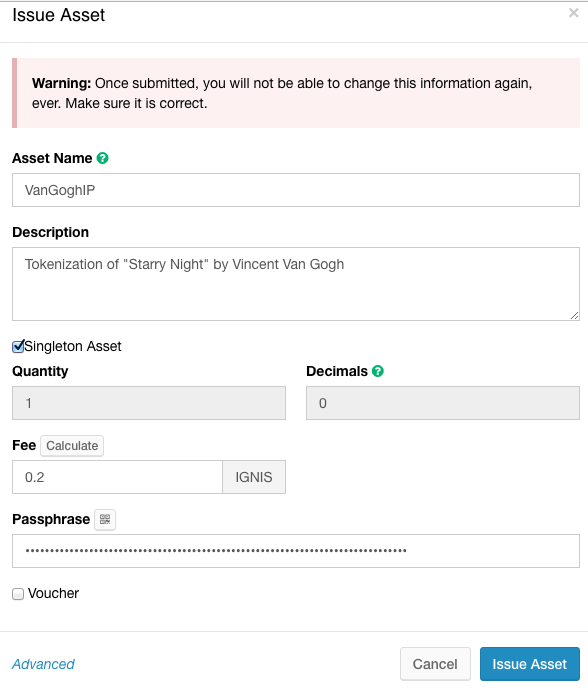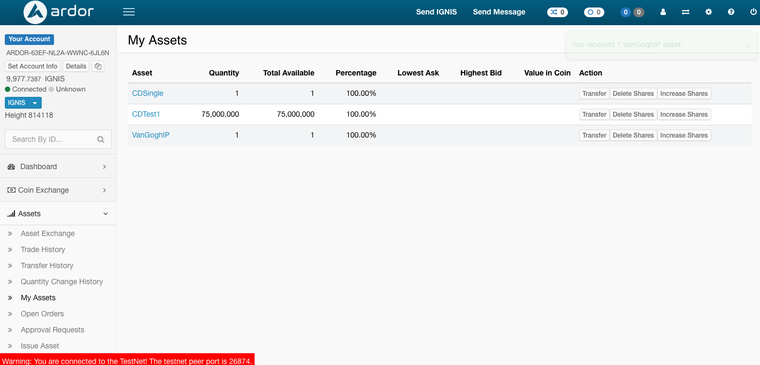Issuing Nonfungible Tokens (NFTs) as Singleton Assets using Ignis
Introduction
The initial wave of public blockchain networks were based on the concept of immutable ledgers used to exchange fungible tokens – or rather, tokens that are uniform and can be substituted for one another. This characteristic is essential in order for money to function as money; however, a wide variety of use cases, such as those involving intellectual property, demand nonfungible tokens that are entirely unique and irreplaceable. On many existing networks, this requires coding special smart contracts.
The Ignis child chain provides a template for issuing unique “singleton assets” in just 3 clicks. Continue reading to learn how to issue nonfungible tokens as singleton assets using Ignis.
Instructions for Issuing Nonfungible Tokens as Singleton Assets
Open the Ardor Client wallet and log in to the Ignis child chain. Navigate to the “Assets” section and look for “Issue Asset.”:
Click “Issue Asset” and a pop-up box appears:
Enter a 3-10 character long Asset Name. This name is not unique – the asset ID assigned at the end of this process is. Enter a description for your asset as well.
Now, we need this to be a nonfungible token (NFT) so we need to check the “Singleton Asset” box, enter our account passphrase, and then click “Calculate” for the minimum fee.
Check all of your details are correct and click “Issue Asset.” You will need to wait for the next block to generate before your asset becomes available.
Identifying Your Unique Asset ID
Once the next block has been created, navigate to the “Assets” menu and select “My Assets.”
You should see your singleton asset but remember – the name is not unique! You must use the asset ID to identify this asset. To do this, click on the Asset name for this singleton asset.
Note: while this menu shows Action options for increasing shares of the singleton asset, the system is hardcoded to prevent this. You can test this by attempting to submit changes – they will always be rejected. UI improvements in the future will make this more clear.
Your unique asset ID is in the upper right corner. For this example, we see the asset ID is 17068039396404689654. This page also shows the Buy and Sell orders on the Asset exchange for your particular asset. For more information on how to complete this section and/or add additional Asset properties and Account controls to limit the transfer of this asset between, for example, accounts that have had KYC/AML performed on them, refer to the advanced guide for launching STOs on Ignis.
Checking Asset Details
For the final step here, let’s check the details of this particular singleton asset. Click on the unique asset ID in the upper right corner and a pop-up box with the asset details becomes visible:
Conclusion
That’s it. You’ve created your non-fungible token using Ignis singleton assets. The Ardor platform has a built-in decentralized exchange where users can buy and sell assets. Asset issuers can limit who can trade their asset by configuring Asset and Account Controls as described in the Launch a Compliant Security Token Offering article.
As a final note, while this asset and all other assets are currently issued through the Ignis child chain, these assets are universally compatible with each of the Ardor platform's child chains.








